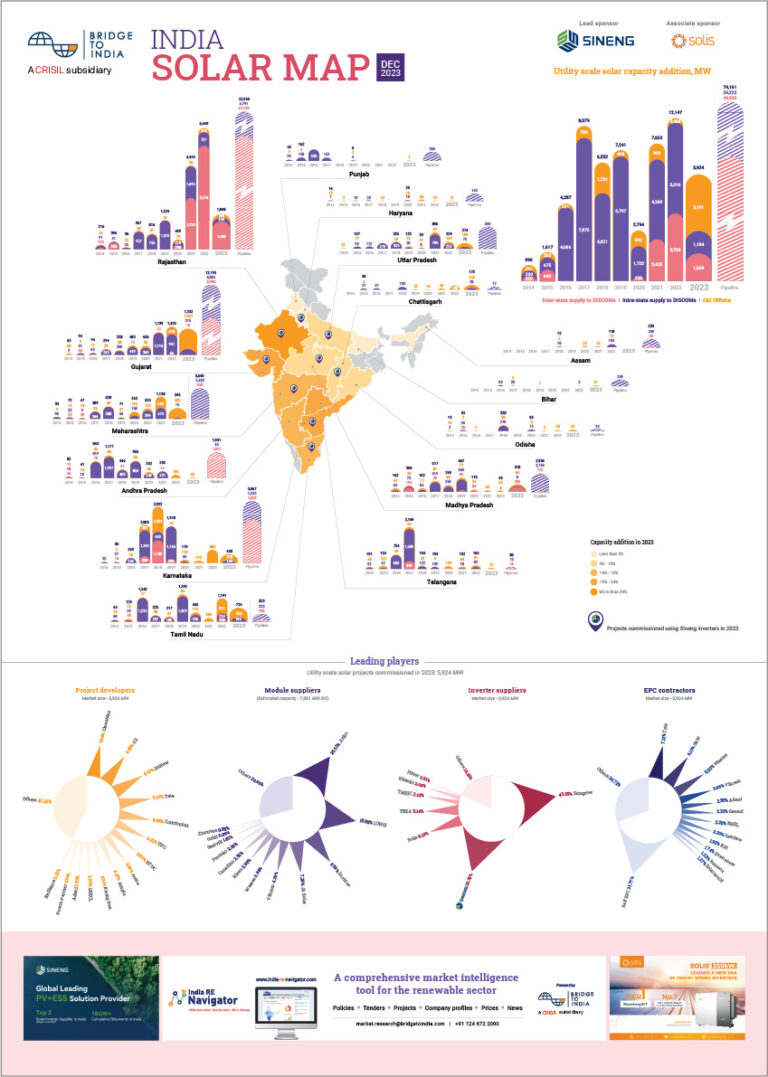Distribution companies (DISCOMs) are the weakest link in India’s power sector with accumulated financial losses of INR 3.8 trillion (USD 57 billion) and debt of INR 4.3 trillion (USD 65 billion) as of 2015 (refer). Government restructuring plan for the DISCOMs, Ujjwal Discom Assurance Yojana (UDAY), is pivoted around states taking over 75 per cent of their outstanding debt as of 30th September 2015 and funding ongoing losses on a regular basis. Through lowering of interest costs and other efficiency measures proposed in the reform, the government expects UDAY to lead to an overall saving of INR 1.8 trillion (USD 27 billion) per annum for DISCOMs.
- UDAY seeks to kill two birds with one stone by improving financial performance of DISCOMs and freeing up banks to provide more debt to the power sector
- By taking decisive action as well as monitoring progress on an active basis, the government has successfully allayed one of the major risk factors for the sector
- All major financially stressed DISCOMs except those of Tamil Nadu, which accounts for over 18% of the total DISCOM debt in the country, have joined the scheme
Until now, 18 states and one union territory have given an in-principle agreement to join UDAY and 10 have already signed the Memorandum of Understanding (MoU) (refer). Notable absentees from the scheme are Tamil Nadu, Karnataka and West Bengal. The Reserve Bank of India has so far issued bonds on behalf of eight state governments worth almost INR 1 trillion (USD 15 billion) (refer for state-wise details) reducing banking sector exposure to the power sector by an equivalent amount. Value of bonds placed by Rajasthan, Haryana and Uttar Pradesh alone is equivalent to 18% of the overall power sector debt in the country. These bonds have been readily subscribed by investors such as Employees’ Provident Fund, Kotak Mutual Fund, Reliance Mutual Fund, UTI MF and the Life Insurance Corp of India (refer) because of marginally higher yields. By shifting debt from DISCOMs to the state governments, the government has not only achieved improved financial profile of the DISCOMs but also improved future debt funding prospects for the sector because of reduction in banking sector exposure to the sector.
A recent survey of solar CEOs carried out by BRIDGE TO INDIA revealed that 54% of the participants are optimistic about the UDAY scheme and contrary to traditional fright about DISCOM financial health, only 8% of them thought that poor off-take was the biggest challenge for achieving the 100 GW target (refer).
The reform process has started on a positive note and it seems that the Ministry of Power is constantly supervising progress which is a very big positive for the sector. BRIDGE TO INDIA believes that better financial ratings of the DISCOMs and lower banking sector exposure for the power sector will be a tremendous boost for attracting private investments in the sector.












